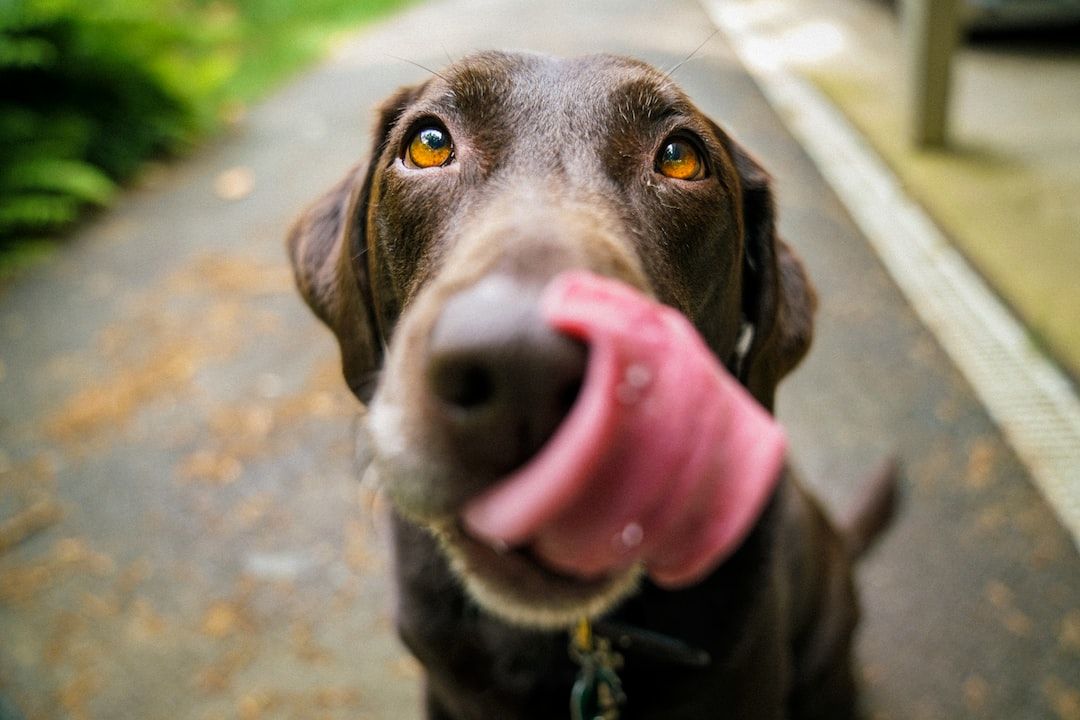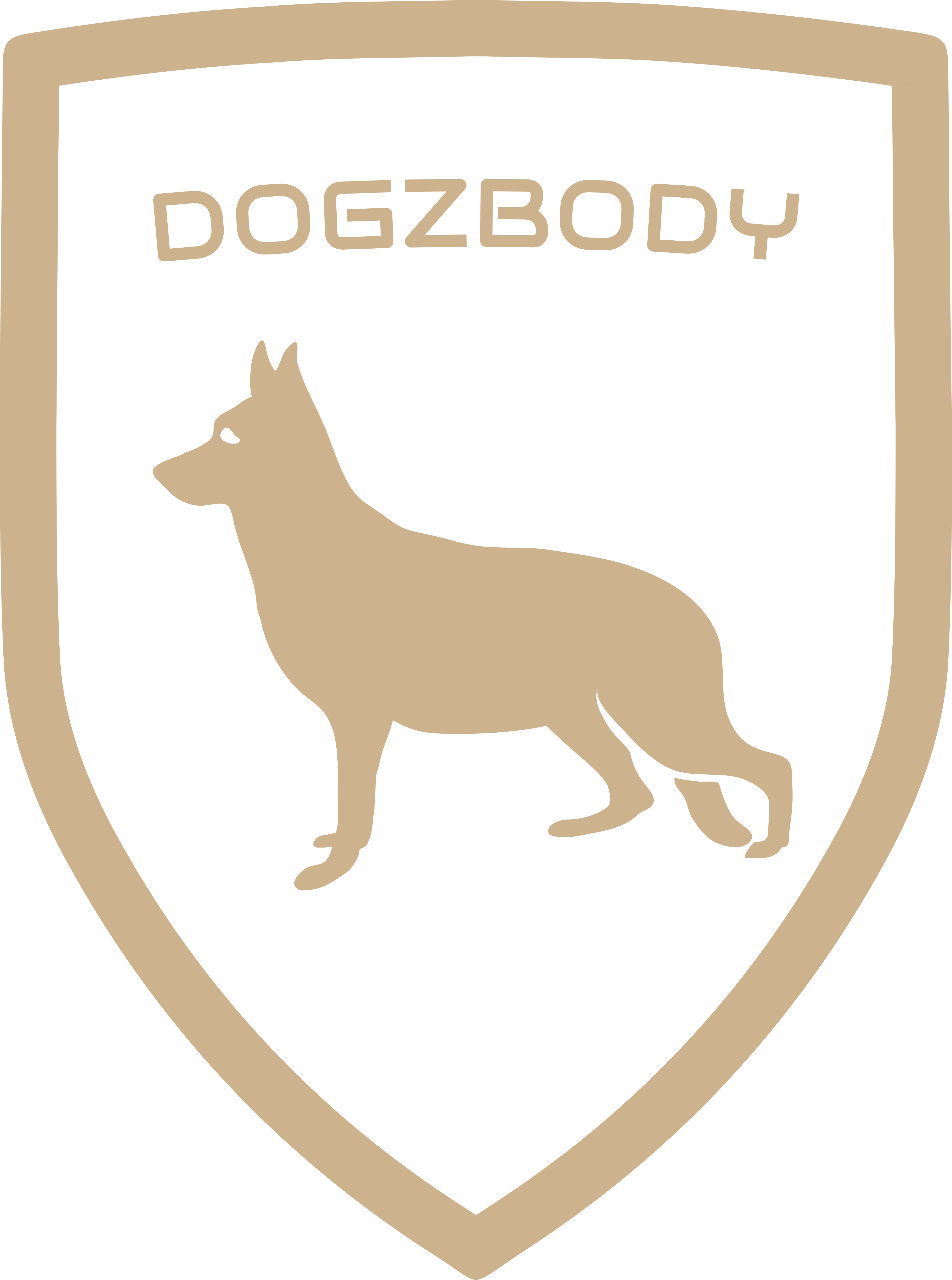
There is nothing better than a healthy wet dog nose to get your attention! The most used sense on a dog is its snout, it is the first thing that greets you when you meet a dog and without a doubt one of the most amazing parts of the body of a dog. Apart from having an amazing 300 million receptors in their nose compared to our 6 million, what other things do we know about this underrated organ in a canine?
Dogs spend about 33% of their lives with their noses pinned to the ground checking out what's around them, exploring life on their doorstep and seeking out who has been and gone using this amazing tool. They are used to sniffing out their favourite treat, checking out another dog, exploring a new person new on the scene or just checking out a new area on their walk. A dog's nose is also used in medicine, warfare and supporting young and old for additional disability help. From seeking out an illness in a person, finding mines or sniffing out explosives or smelling abnormal pheromones on a person who is about to have a seizure, a dog's nose should never be under-estimated; it is truly an amazing part of a dog that needs a lot more respect than often given. We consider human noses to be amazing; sniffing flowers, recognizing a perfume, and sensing danger with our nose by smelling smoke or burnt food. But when a dog takes a whiff at life using its nose you can truly understand how amazing their noses really are, here are some fun facts about our 4 legged friends' snouts:
Your dog thinks you smell!
Regardless of how clean you think you are, your dog will always be able to smell you. Even if you try to disguise your smell with perfume, soap or lotion your dog will always be able to identify you by your own individual scent.
Wet noses help capture scents.
Believe it or not, a dry nose does not mean your dog is sick. But a wet nose is much better at capturing scents in the air for a dog, just like a wet cleaning cloth picks up dirt, a wet dog's nose picks up more scents. The top lip and nose join. That little indentation, known as the "Philtrum," which you see in the middle of the bottom part of the nose and at the top of your dog's upper lip is not just for design it has a purpose. It is understood to carry moisture from the mouth to the Rhinarium—the moist surface area of your dog's nose. A bump in their mouth helps their nose work better. On the roof of your dog's mouth is a little bump which is known as the"Incisive Papilla" which communicates with the dog's Vomeronasal organ which is responsible for detecting pheromones, cool stuff eh!
Dogs don't blow their noses.
The "drip and lick" process is how dogs clean their noses, yucky stuff eh? Dogs obviously don't have hands so if they have additional snotty discharge, a runny nose or a spot of dirt on top, they don't get a tissue, they lick it clean with their long tongue! A bit like an in-built wet wipe!
Why do dogs have slits on each side of their nose?
Every time your dog exhales, the air is dispersed through these slits on either side. The middle part of the nose is in between the slits where the air is inhaled. Dogs smell in 3D! Dogs can smell separately with each nostril. Just as our own eyes see two slightly different views of the world, and our brain joins them to form a 3-D picture, a dog’s brain uses the different odour profiles from each nostril to determine exactly where objects with scents are.
Do all dogs have the same strength of smell?
No, they do not. Different breeds of dogs have different strengths in smell. For example, a Blood Hound has a very strong sense of smell hence being used in working environments, also working breeds like German Shepherds and Labradors also have a stronger sense of smell. Brachycephalic breeds (eg Pugs, Shih Tzu) who have compromised nose airways means their noses do not smell as well. March 2020 - Scientists claim dogs can detect heat with their noses! Recent research has had some astonishing results. A bit like having an infrared sensor in their nose. A dog's nose can help detect minute changes in temperature when another animal goes past or from a small distance. A new study by Scientific Reports suggests that the tip (the wet part that is free of hair) can detect heat from a distance. A dog's nose is packed full of nerve endings which help contribute to this newly found skill of the nose. “Dogs are able to sense the thermal radiation coming from warm bodies or weak thermal radiation and they can also direct their behaviour according to this signal,” said Anna Balint, lead author of the study.
So next time your furball comes up to you all excited with a wet nose and smears it all over your clean worktop, just think about what an awesome little thing it really is, give it some credit and maybe watch it in full swing by giving a favourite dog treat to give it some sensory overload!
Dogs spend about 33% of their lives with their noses pinned to the ground checking out what's around them, exploring life on their doorstep and seeking out who has been and gone using this amazing tool. They are used to sniffing out their favourite treat, checking out another dog, exploring a new person new on the scene or just checking out a new area on their walk. A dog's nose is also used in medicine, warfare and supporting young and old for additional disability help. From seeking out an illness in a person, finding mines or sniffing out explosives or smelling abnormal pheromones on a person who is about to have a seizure, a dog's nose should never be under-estimated; it is truly an amazing part of a dog that needs a lot more respect than often given. We consider human noses to be amazing; sniffing flowers, recognizing a perfume, and sensing danger with our nose by smelling smoke or burnt food. But when a dog takes a whiff at life using its nose you can truly understand how amazing their noses really are, here are some fun facts about our 4 legged friends' snouts:
Your dog thinks you smell!
Regardless of how clean you think you are, your dog will always be able to smell you. Even if you try to disguise your smell with perfume, soap or lotion your dog will always be able to identify you by your own individual scent.
Wet noses help capture scents.
Believe it or not, a dry nose does not mean your dog is sick. But a wet nose is much better at capturing scents in the air for a dog, just like a wet cleaning cloth picks up dirt, a wet dog's nose picks up more scents. The top lip and nose join. That little indentation, known as the "Philtrum," which you see in the middle of the bottom part of the nose and at the top of your dog's upper lip is not just for design it has a purpose. It is understood to carry moisture from the mouth to the Rhinarium—the moist surface area of your dog's nose. A bump in their mouth helps their nose work better. On the roof of your dog's mouth is a little bump which is known as the"Incisive Papilla" which communicates with the dog's Vomeronasal organ which is responsible for detecting pheromones, cool stuff eh!
Dogs don't blow their noses.
The "drip and lick" process is how dogs clean their noses, yucky stuff eh? Dogs obviously don't have hands so if they have additional snotty discharge, a runny nose or a spot of dirt on top, they don't get a tissue, they lick it clean with their long tongue! A bit like an in-built wet wipe!
Why do dogs have slits on each side of their nose?
Every time your dog exhales, the air is dispersed through these slits on either side. The middle part of the nose is in between the slits where the air is inhaled. Dogs smell in 3D! Dogs can smell separately with each nostril. Just as our own eyes see two slightly different views of the world, and our brain joins them to form a 3-D picture, a dog’s brain uses the different odour profiles from each nostril to determine exactly where objects with scents are.
Do all dogs have the same strength of smell?
No, they do not. Different breeds of dogs have different strengths in smell. For example, a Blood Hound has a very strong sense of smell hence being used in working environments, also working breeds like German Shepherds and Labradors also have a stronger sense of smell. Brachycephalic breeds (eg Pugs, Shih Tzu) who have compromised nose airways means their noses do not smell as well. March 2020 - Scientists claim dogs can detect heat with their noses! Recent research has had some astonishing results. A bit like having an infrared sensor in their nose. A dog's nose can help detect minute changes in temperature when another animal goes past or from a small distance. A new study by Scientific Reports suggests that the tip (the wet part that is free of hair) can detect heat from a distance. A dog's nose is packed full of nerve endings which help contribute to this newly found skill of the nose. “Dogs are able to sense the thermal radiation coming from warm bodies or weak thermal radiation and they can also direct their behaviour according to this signal,” said Anna Balint, lead author of the study.
So next time your furball comes up to you all excited with a wet nose and smears it all over your clean worktop, just think about what an awesome little thing it really is, give it some credit and maybe watch it in full swing by giving a favourite dog treat to give it some sensory overload!

